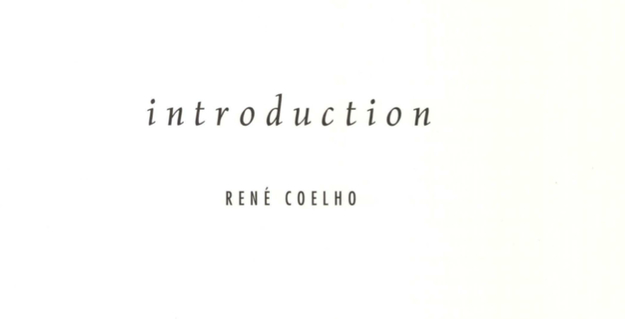In the visual arts at the end of the 19th century, one can distinguish a strong reaction to the developments of industry. Many artists attempted to deny the coming of the 'machine' and looked backward to the Romantic Era for forms and ideas. Actually, at that point, the visual arts surrendered their innovative role to the applied arts. For example. Art Nouveau broke with tradition by making use of the new materials which industry offered.
Now, at the end of the 20th century, we are also seeing a reaction to the latest developments of technology. Now, however, there is a tendency to use the weapons of the enemy in trying to counterbalance the massification and blunting which are a consequence of the use of modern communication media.
Like their great-grandfathers, a number of artists feel threatened by the development of technology, but, instead of turning to the past Romantic forms, the artist of this century feels the need to prove that the efficient, dominating and massifying products of electronics can be turned to other, more beautiful and imaginative purposes. The digital instrumentarium is growing more and more interesting, and is providing the impulse to allow the borders between the old, 'craft-separated' disciplines to become blurred and uncertain. Combinations of painting, sculpture, music, theater and literature are coming into being.
Another opinion being heard lately in the Information Technology industry is that hardware is expanding at such a lightning pace that the inventors of software are being left further and further behind, and that only once in a while does an artist think up a curious, 'illogical' catch-up manoeuvre. In that way, the artist becomes the fearless rescuer of a technology which is developing unevenly.
But how to explain that in the Netherlands, which certainly is not out in front technologically, such interesting developments are taking place in these new art forms? Probably, the Dutch system of government subsidies for art - based more on the renowned Dutch tradition of tolerance and on a feeling of ‘you never know’ than on cultural awareness - for all its seeming waste, still creates breathing room for experimentation. This room is absolutely essential for innovation and should be offered and protected by the government and stimulated by industry and science. That is why the Rijksdienst Beeldende Kunst’s commissioning and the Ministry of Culture’s part-funding of Imago are such positive developments.
Imago's intention, apart from being a personal selection, is to present a selection of works representative of the state of affairs in modern Dutch art, inasmuch as it is influenced by technological developments. I believe that the fourteen artists who have been chosen form a truly representative cross-section of Dutch media art.
The younger ones have ‘grown up' with the media technology; the older ones come from other disciplines. For each of them, technology is only a means, never an end. Painterly and sculptural elements, images as a support for sound and vice- versa, conceptual and theatrical elements, physics and philosophy, exploration of the borders between art and science, all are present within this overview of a fascinating and innovative period of the visual arts on the threshold of the third millennium.
Mediamatic magazine vol 5#1+2 1 Jan 1990
Introduction
In modern art history, the term fin de siècle is associated, first and foremost, with the end of the ïgth century. Now that 1 1
the 2.0th century is nearing its end, the term is being used more and more often to mean the end of our own century.
Whether this new connotation will overshadow the old remains to be seen in coining years. In my view, there is indeed a specific sort of art which accompanies the closing years of a period.
